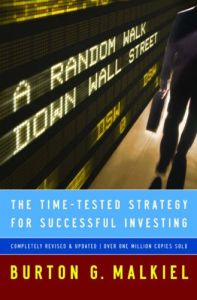Join getAbstract to access the summary!

Join getAbstract to access the summary!
Burton G. Malkiel
A Random Walk Down Wall Street
The Time-Tested Strategy for Successful Investing
W.W. Norton, 2007
What's inside?
When you wander Wall Street, watch out for stray theories and useless predictors.
Recommendation
The first edition of Burton Malkiel’s A Random Walk Down Wall Street appeared in 1973, a few years after the first big computer technology bubble, the go-go era, burst. This eighth edition appears after the popping of the dot.com bubble, the last of the 20th century’s great technology bubbles. Investors burned in the first bubble could have been excused; after all, they didn’t have Malkiel’s book. But it’s astounding how avidly Internet speculators threw aside all that Malkiel and others had taught them. This book belongs on every investor’s bookshelf and ought to be consulted – or at least touched to the forehead – before any investment decision. Most investment books aren’t trustworthy, because their authors are salespeople who are really making a pitch instead of trying to inform you. Malkiel is disinterested. He is a teacher with the intellectual discipline of a true financial economist, and yet he writes as vividly as a good journalist. getAbstract recommends this classic: All you need to know about the market is between its covers.
Summary
About the Author
Burton G. Malkiel holds the Chemical Bank Chairman’s Professorship at Princeton University. He is a former member of the Council of Economic Advisors and serves on the boards of several major corporations, including the Vanguard Group of Investment Companies and Prudential Financial Corporation.
















Comment on this summary